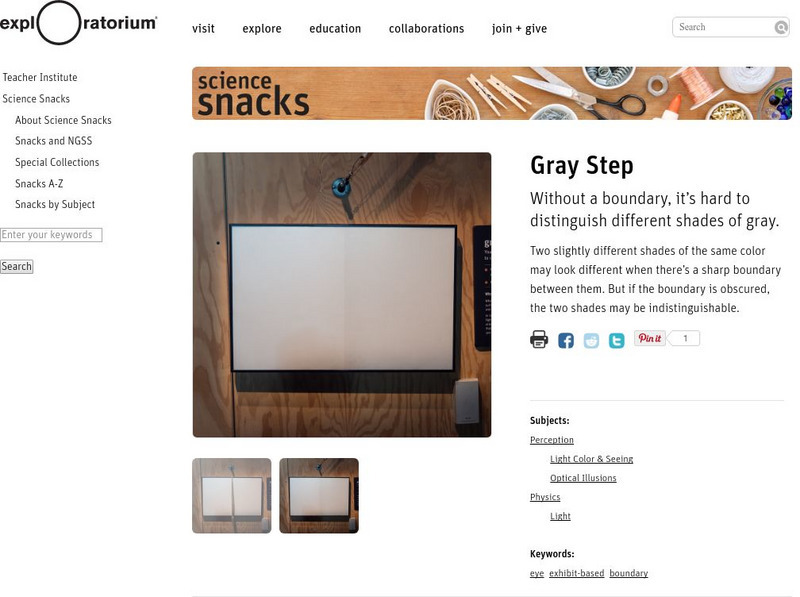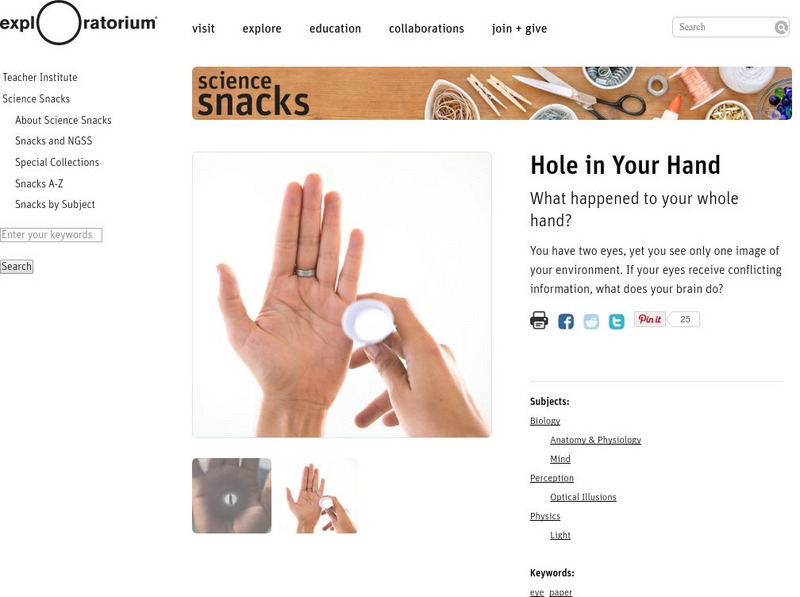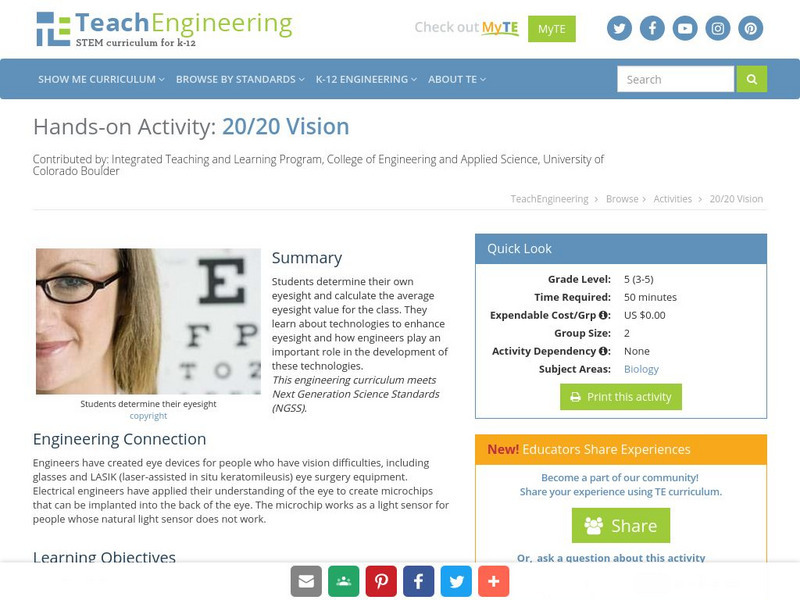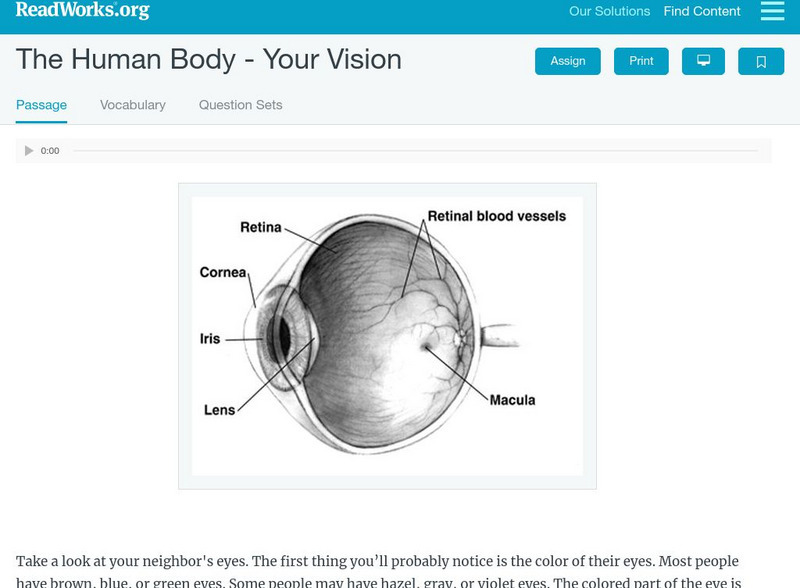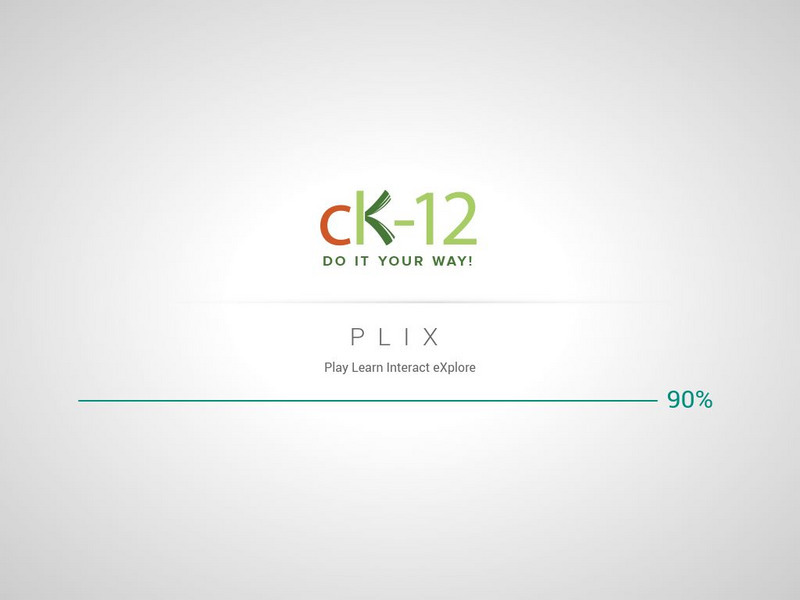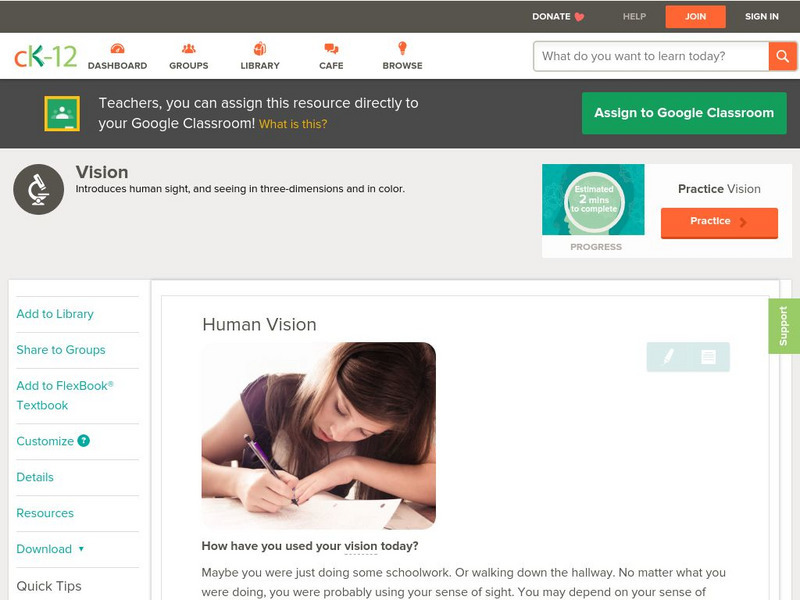Exploratorium
Exploratorium: Science Snacks: Gray Step
An activity to test your perception to see if you can distinguish between different shades of gray.
Exploratorium
Exploratorium: Science Snacks: Hole in Your Hand
Create an optical illusion with this activity. Understand what your brain interprets if it receives conflicting information from your eyes.
Other
American Foundation for the Blind: Glossary of Eye Conditions
This resource presents a complete listing of all types of eye conditions. Further resources are linked.
National Institutes of Health
National Eye Institute: Optical Illusions
Visit this site for some optical illusions for you to have fun with! Click on the "optical illusions" page in this PDF format for a printable version of these four illusions.
Curated OER
Kids Health: Taking a Good Look at Glasses
This site from Kids Health provides comprehensive information on how corrective lenses help.
Curated OER
Kids Health: Conjunctivitis (Pinkeye)
Information about the different types of Conjunctivitis, incubation, and prevention. Has links to related articles.
TeachEngineering
Teach Engineering: 20/20 Vision
In this activity, students determine their own eyesight and calculate what a good average eyesight value for the class would be. Students learn about technologies to enhance eyesight and how engineers play an important role in the...
Curated OER
Kids Health: Eyes
Your eyes see, but how does vision happen? Find out how the eyes and brain work together through this video and accompanying activity guide. [6:09]
Donald Clark
Visioning
Lesson plan, complete with scenario, for practice in writing a vision statement.
Read Works
Read Works: The Human Body Your Vision
[Free Registration/Login Required] This informational text passage gives facts about human vision. This passage is a stand-alone curricular piece that reinforces essential reading skills and strategies and establishes scaffolding for...
CK-12 Foundation
Ck 12: Vision Bricks
[Free Registration/Login Required] Students explore the concept of the eye by navigating through the interactive learning module and then answering questions that go along with the module. Students can also learn more about the concept...
CK-12 Foundation
Ck 12: Life Science: Human Vision
[Free Registration/Login may be required to access all resource tools.] Sight, or vision, is the ability to see light. It depends on the eyes detecting light and forming images. It also depends on the brain making sense of the images, so...
CK-12 Foundation
Ck 12: Physical Science: Vision and the Eye
[Free Registration/Login may be required to access all resource tools.] The structure and function of the eye and how we see.
Other
Community Resources for Science: Seeing Is Believing?
This lesson plan focuses on the parts of our bodies that we use to see and how the brain actually causes changes in what we see. Specific instructions and talking points are provided along with multiple activities for the learners to...
Other
All About Vision: Amblyopia (Lazy Eye)
Describes the condition known as amblyopia. Includes a sample picture to find out what a amblyopic sees.
Virginia Tech
Jacob Have I Loved: Review
How does the vision of self come into play in the novel "Jacob Have I Loved," by Katherine Paterson? Find out more when you visit this online resource.
Remedy Health Media
Health Central: Conjunctivitis
Excellent information on conjunctivitis from the HealthCentral Encyclopedia. Includes definition, description, risk and factors, and symptoms.
Optical Society
Optical Society of America: Exploring the Science of Light: Classroom Activities
Experiments and activities for investigating the science of light, as well as in-depth explanations of some of the light principles.
Physics Classroom
The Physics Classroom: Light Waves/color: Visible Light and the Eye's Response
Students learn how the eye responds to visible light, and how that function ultimately allows us to see.
Physics Classroom
The Physics Classroom: Refraction/ray Model of Light: Image Formation/detection
Students discover the four parts of the eye are the most instrumental in the task of producing images that are discernible by the brain.
PBS
Pbs Learning Media: Microscope Use
Students are asked to explain why scientists need to adjust the position of objects under a microscope.
Other
The Vision Learning Center: Color Blindness
Page with facts about color blindness. Provides good questions and good feedback about this eye condition and what treatments are available.
Auburn University
Auburn University: Assessing Phoneme Awareness and Decoding
How can you assess phoneme awareness and decoding skills in your students? Teachers can benefit from this informative resource that takes you through this intricate path of phonemic awareness.


